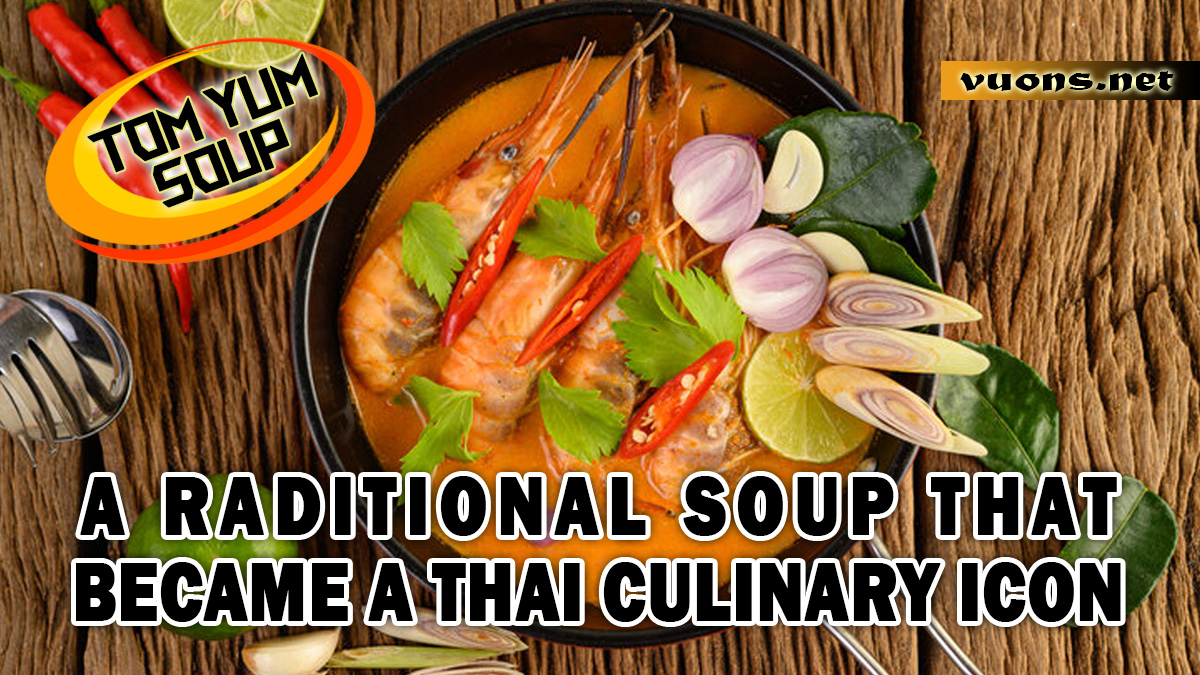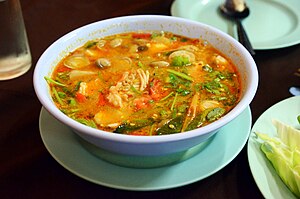Tom Yum and Thai Food Culture: More Than Just Soup
The Long History of Tom Yum in Thai Culinary
Tom Yum is a traditional Thai soup known for its sour, spicy and aromatic taste. This dish is not only popular in Thailand, but also all over the world. Tom Yum’s long history in Thai cuisine reveals how this soup has become an integral part of Thai food culture.
Tom Yum comes from a combination of two Thai words: “Tom” which means to boil and “Yum” which refers to a mixture of sour and spicy flavors. This dish was originally made with simple local ingredients such as lemongrass, kaffir lime leaves, and chilies, which give it a distinctive and refreshing taste. Over time, Tom Yum has evolved with the addition of various ingredients such as shrimp, chicken, or mushrooms, and more complex spices.
In Thai culture, Tom Yum is often served at special occasions and family gatherings. The strong taste of the soup symbolizes balance and harmony, principles highly valued in Thai cuisine. Apart from that, Tom Yum is also considered a dish that can warm the body and increase appetite, making it a popular choice during winter or when feeling unwell.
This culinary tradition continues to grow, with Thai restaurants around the world serving various versions of Tom Yum. From street stalls to fine restaurants, this soup has reached all levels of society and continues to be a symbol of Thailand’s rich flavors and rich culture.
With its popularity continuing to grow, Tom Yum not only reflects Thailand’s rich culinary history but also brings together people from diverse backgrounds through unique flavors and experiences.
Tom Yum as a Representation of Balance of Flavors in Thai Cuisine
Tom Yum is an iconic soup from Thailand which is not only known for its appetizing taste but also as Tom Yum as a representation of the balance of flavors in Thai cuisine. This dish combines various flavor elements—sour, spicy, and slightly sweet—with a perfection that reflects the basic principles of Thai cuisine.
Tom Yum’s main ingredients include lemongrass, kaffir lime leaves, chilies, and additional ingredients such as shrimp, chicken, or mushrooms. This combination creates a complex yet harmonious flavor profile. The sour taste of the lime and broth, the spiciness of the chilies, and the fresh aroma of the lemongrass and lime leaves work together to provide a refreshing and satisfying taste sensation.
In Thai cooking, balance of flavors is key. Tom Yum is a perfect example of this principle, where each ingredient plays an important role in creating harmony. The strong spicy flavor is combined with the acidity of the lime, while the stock provides a rich depth of flavor. This diversity of ingredients and cooking techniques ensures that every bite of Tom Yum delivers a balanced complexity of flavors.
Tom Yum is not just a dish, but also a reflection of Thailand’s culinary philosophy which prioritizes balance and harmony. This soup is often served at celebrations and communal meals, showing how Food can bring people together and reflect a rich culture.
With its reputation as a dish that exemplifies balance of flavors, Tom Yum continues to be one of the most loved and recognized Thai foods throughout the world.
Tom Yum in Thai Cultural Rituals and Celebrations
Tom Yum, the famous hot and sour soup from Thailand, is not only popular as an everyday dish, but also has a special place in the Tom Yum in Thai Cultural Rituals and Celebrations. This soup is often an important part of various cultural events and celebrations, reflecting the rich culinary and traditions of Thai society.
In Thai culture, Tom Yum is often served at family events, celebrations and social gatherings. This dish reflects the spirit of togetherness and joy. During celebrations such as Songkran (Thai New Year) and Loy Krathong, Tom Yum is usually part of the dinner table with family and friends. The spicy and refreshing taste of the soup is considered suitable for celebrating special moments and adding warmth to the atmosphere.
Apart from that, Tom Yum also has symbolic meaning in several cultural rituals. In some traditions, this soup is considered a food that can bring good luck and health. The use of fresh ingredients such as lemongrass, kaffir lime leaves and chilies reflects the belief in health and wellness benefits.
Tom Yum’s presence at special events is not just about taste, but also about connecting generations and strengthening social bonds. Serving Tom Yum at celebrations is a way to honor Thai culinary traditions and express gratitude and happiness.
Tom Yum Regional Variations: Different Tastes in Each Region
Tom Yum, a Thai soup known for its sour and spicy taste, has variations that reflect the culinary richness of various regions in Thailand. Each region offers Regional Variations of Tom Yum: Different Tastes in Each Region, making each version of this soup unique and distinctive.
In Bangkok and the central region of Thailand, Tom Yum Goong is the most famous variation. This soup uses shrimp as the main ingredient, combined with spices such as lemongrass, kaffir lime leaves and chilies. The sour taste of lime and the spicy power of chili peppers create a refreshing harmony of flavors. This version often has a clearer, lighter broth.
Meanwhile, in northern Thailand, such as Chiang Mai, Tom Yum is often served with additional ingredients such as mushrooms or chicken. This version may have a slightly stronger and fatty taste, with the addition of different spices such as turmeric and galangal.
In the northeast region, or Isaan, Tom Yum can be found with a spicier and saltier touch. The intense spicy flavor is often enhanced by the use of more chili peppers, and sometimes the soup is served with additional ingredients such as pork or fish.




